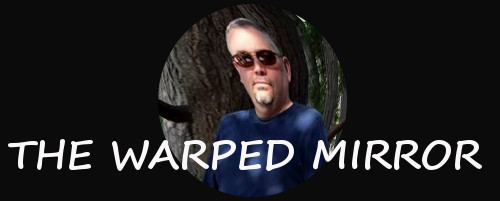“Da Vinci on Form and Limitation” may not be the most compelling title, but stick with me for a moment.
In “The Notebooks of Leonardo Da Vinci,” he wrote,
That which is no part of any body is called nothing. That which has no limitations, has no form.
To be clear, Da Vinci is talking about painting. His somewhat pedantic consideration of points, lines, and forms in painting is part of a discussion of the eye, how we see, and how that must translate to the painting. I wonder, however, if we might apply the concept far beyond the two dimensional world of the canvas and apply it to the vastness of creation it self.
In the opening verses of the book of Genesis in it reads,
1 In the beginning, God created the heavens and the earth. 2 The earth was without form and void, and darkness was over the face of the deep. And the Spirit of God was hovering over the face of the waters (Genesis 1:1-2, ESV).
“Without form and void.” Those are interesting words for sure and all the more in light of what Da Vinci wrote. albeit with a different motive in mind.
Let me just get to the point. Creation as we know it exists only in its limitations. A tree is only a tree because it is constrained by the limitations of what a tree is. A particular species of tree is of that species because it is limited. If a Pine tree presumed to grow leaves like those of an Oak tree, it would no longer be a Pine tree. In the same way a human is a human because they are similarly limited. If we grew antlers and wings we would be strange creatures indeed. These things are obvious enough.
However, if we back up to the prolegma of creation, the time of formlessness and void, daring to apply Da Vinci’s insight, we see nothing. It is nothing because it is not yet limited (arguably there are already some limitations in Genesis 1:1). Being limitless it has immeasurable potential to be something, but in boundless chaos, or so it must appear to us, we have nothing more than the potential of something. It is only by constraining and limiting that potential that we have something. God created the potential for something and then limited it that we might have something.
Now do not presume that I would mean this of God, for God is uncreated thus not subject to the necessity of limited creation. Gog is limitless, without form as a human has form. That is, unless God so chooses to limit Himself as He did in Jesus Christ.
5 …Jesus, 6 who, though he was in the form of God, did not count equality with God a thing to be grasped, 7 but made himself nothing, taking the form of a servant, being born in the likeness of men. 8 And being found in human form, he humbled himself by becoming obedient to the point of death, even death on a cross (Philippians 2:5-8, ESV).
The form of God but not equal to God. In the form of a servant, in human form. This is the remarkable unlimited God who limited Him self that we might see Him, know Him and be reconciled to Him.
We who exist only in our limitedness can not become equal to God since as created beings we must become nothing if all limitations are cast off. The great lie in the garden that we could be like God is absurd as it is foolish. To presume to leap over that divide is to become nothing (understand that I am not suggesting any sort of nihilism, merely pointing out the absurdity of the presumption).
If there is a point to this whimsical philosophical rambling, it is this. Rejoice in your limitation, for with out it, you would be nothing. To have unlimited potential is to be nothing. While we might push the boundaries of our limits and have certain freedom within those boundaries to the extent that God has permitted, we can no more cease to be who and what we are than a dog who wants to be a cat. Not that any self respecting dog would want that.
PS – This dear Kraus and Dawkin, limitation is why there is something rather than nothing.
______
Leonardo Da Vinci, compiled and edited by Jean Paul Richter, The Notebooks of Leonardo Da Vinci, Vol. 1, Gutenberg
